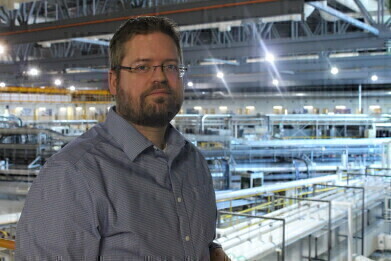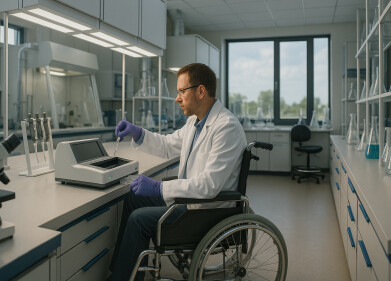-
 Dr David Cooper (Credit: Canadian Light Source)
Dr David Cooper (Credit: Canadian Light Source) -
 Dr Kim Harrison (Credit: Canadian Light Source)
Dr Kim Harrison (Credit: Canadian Light Source)
News
New imaging technique holds light for Osteoporosis Therapies
Jan 19 2023
A research team from the College of Medicine at the University of Saskatchewan has developed a new approach to imaging that could help to improve outcomes for osteoporosis sufferers, said to number more than 2.3 million people in Canada The technique, which detects changes in bone tissue far more quickly than the bone densitometry scans currently used in health care, could lead to improved drug treatment for the condition.
Using the BMIT beamline of the Canadian Light Source at the University of Saskatchewan, Dr. David Cooper and colleagues were able to see the incredibly tiny pores inside cortical bone, the dense outer surface of bone that accounts for the majority of bone mass. These pores change over time, showing how bone tissue is continuously removed and replaced.
The researchers stimulated this bone turnover using parathyroid hormone, then tracked the changes in the pores of the cortical bone in as little as 14 days.
“In humans, the pores we were looking at are about the width of a few hairs – a quarter of a millimetre – and in rabbits they’re about half that size,” said Cooper, whose latest breakthrough builds on a decade’s worth of work in this area. “Using micro-computed tomography (micro-CT) we were, for the first time, able to see the shapes of these pores and actually track them over time.”
Study lead Dr. Kim Harrison said this research would not have been possible using conventional X-ray techniques. “This uses refractive qualities between soft and hard tissues which highlights these pores within the bone and makes it easier to image and track the changes,” she said.
“This really is the establishment of a fundamentally new way of looking at bone turnover,” said Cooper. “Nobody has ever been able to do this before in terms of tracking the pores.”
Current osteoporosis diagnostic testing, done by bone density scans, is “a very blunt instrument,” Cooper added. “It might take years for changes to be detectable. We’re detecting these things over weeks in animals. It could have a rapid impact on how current drugs used in the treatment of osteoporosis are deployed.”
More information online
Digital Edition
Lab Asia Dec 2025
December 2025
Chromatography Articles- Cutting-edge sample preparation tools help laboratories to stay ahead of the curveMass Spectrometry & Spectroscopy Articles- Unlocking the complexity of metabolomics: Pushi...
View all digital editions
Events
Jan 21 2026 Tokyo, Japan
Jan 28 2026 Tokyo, Japan
Jan 29 2026 New Delhi, India
Feb 07 2026 Boston, MA, USA
Asia Pharma Expo/Asia Lab Expo
Feb 12 2026 Dhaka, Bangladesh


















